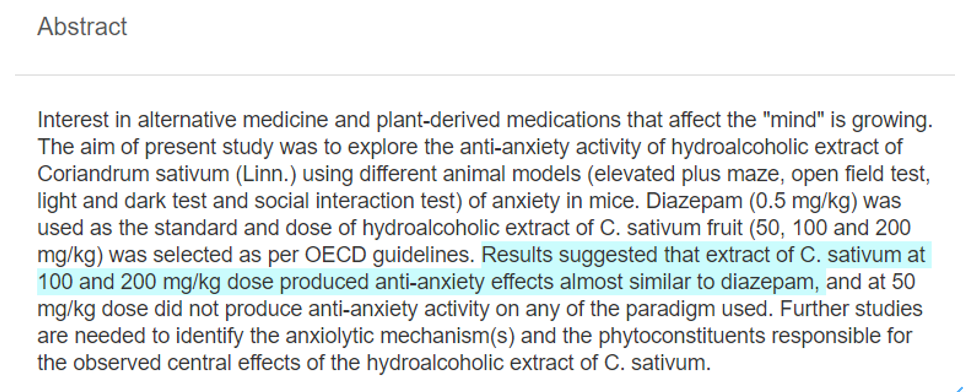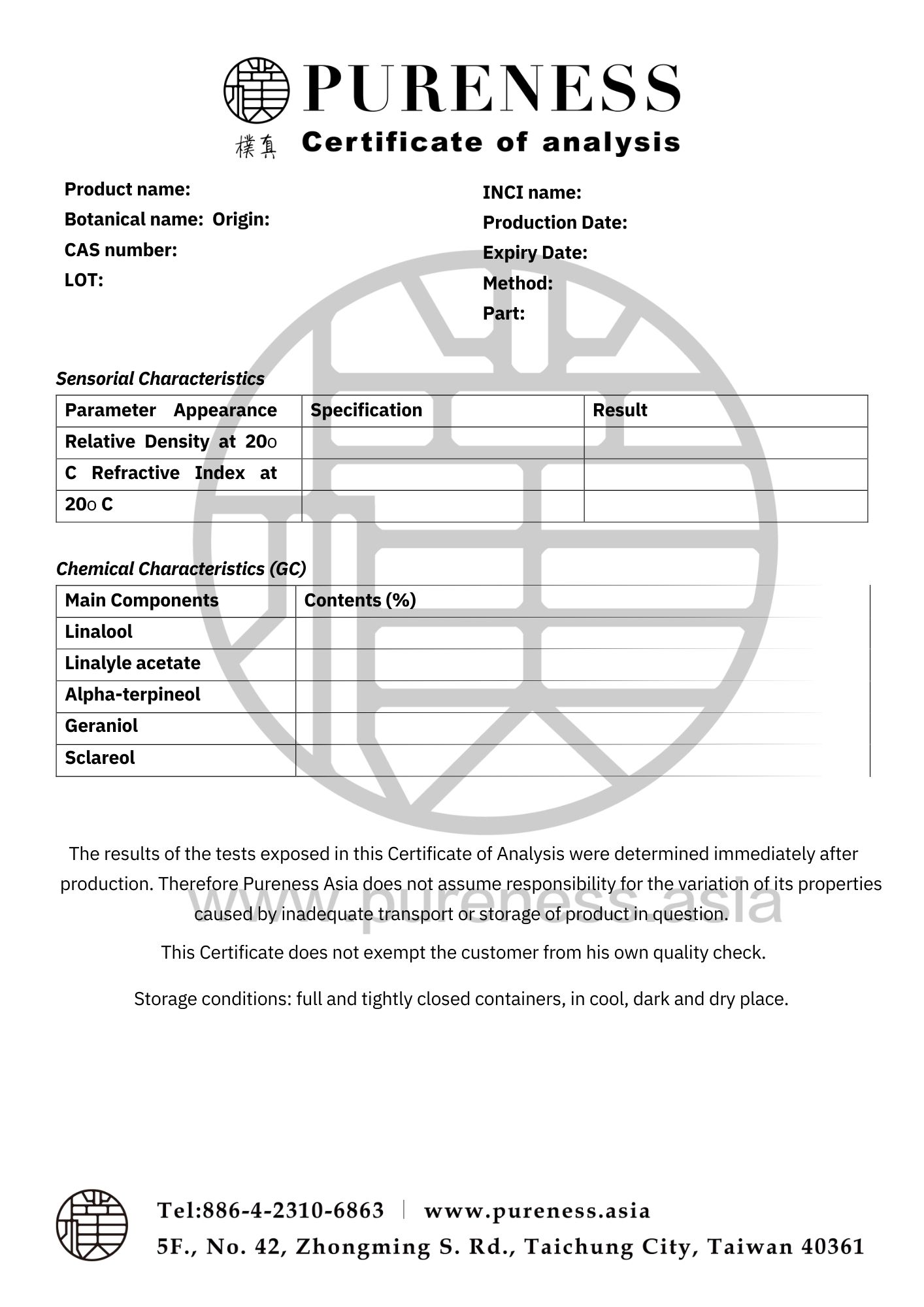
Coriander
Scientific name|Coriandrum sativum
Origin|India
Classification|Spice series
Specifications|500g-25kg Please contact sales for details
Extraction part|Seed
Extraction method | Distillation
Plant family|Apiaceae
Aroma|A distinctive scent with sweet, woody notes
▎Essential Oil Introduction
Coriander (Coriandrum sativum), also known as cilantro, is believed to have been introduced to China by the Arabs, which is why it is referred to as "胡荽" (Húsuī) in Chinese. In Taiwan, it is commonly known as "香菜" (xiāngcài). Its scientific name is derived from the Latin word "koris," meaning "bug," due to the seed's resemblance to an insect. It is a hardy annual herb that grows 50-90 cm tall and features delicate, vibrant leaves. Coriander is a widely used herb in Europe and the Middle East and is now cultivated around the world.
Both the leaves and seeds contain aromatic compounds. Coriander leaves are an essential ingredient in Taiwanese cuisine, used to remove the gamey taste from meat and enhance flavor. The essential oil is extracted from fully mature, dried seeds, known as coriander seeds. The seeds are round, about 3-5 mm in diameter, and their chemical composition changes at each stage of maturity. After drying, the seeds turn light brown. The essential oil, known as coriander seed essential oil, is extracted from the seeds and has a scent very similar to the raw seeds, ranging from colorless to pale yellow.
While the immature fruit shares the same distinctive aroma as the leaves, it develops a spicy, refreshing scent when fully matured. In the perfume industry, coriander seed essential oil is valued for its excellent fixative properties and its ability to blend seamlessly with various fragrances, often providing a distinctive, masculine scent, making it a popular choice in perfumery.
▎Component Analysis
|Main component: Monoterpenes
The chemical composition of coriander essential oil varies depending on the plant source and seed maturity. The primary component is linalool (also known as coriandrol), making up approximately 60-87%. Monoterpenes, such as pinene and terpinene, are also present in trace amounts.
|Research Validation

▸ In 2011, Machendra and Bisht studied the anxiolytic effects of coriander seed essential oil and coriander's aqueous-ethanol extract (an extraction using water and alcohol). Their research confirmed the findings of previous studies by Emamghoreishi et al. (2005).
|Raw Material Certifications
To obtain relevant certification information, please contact us on WhatsApp.
▎References
- Acevedo-Rodríguez P, Strong MT, 2012. Catalogue of the Seed Plants of the West Indies. Smithsonian Contributions to Botany, no. 98. Washington DC, USA: Smithsonian Institution Scholarly Press, 1192 pp.
- Britton NL, Wilson P, 1923-1926. Botany of Porto Rico and Virgin Islands. Scientific Survey of Porto Rico and Virgin Islands. New York, USA: New York Academy of Sciences.
- Diederichsen A, Rugayah, 1999. Coriandrum sativum L. In: Guzman CC de, Siemonsma JS, Eds. Plant Resources of South-East Asia (PROSEA) No. 13: Spices. Backhuys Publisher, Leiden, The Netherlands, pp. 104-108.
- Flora Mesoamericana, 2015. Flora Mesoamericana. Tropicos website St. Louis, Missouri and Cambridge, Massachusetts, USA: Missouri Botanical Garden and Harvard University Herbaria.
- Ravindran, PN, 2017. Encyclopedia of herbs and spices. Wallingford, UK: CAB International.
- T.Eguale. G.Tilahun. A.Debella. A.Feleke. E.Makonnen. In vitro and in vivo anthelmintic activity of crude extracts of Coriandrum sativum against Haemonchus contortus. Journal of Ethnopharmacology。 April 2007, Pages 428-433
- Mohamed Fawzy Ramadan. Khaled Mohamed M. Wahdan. Blending of corn oil with black cumin (Nigella sativa) and coriander (Coriandrum sativum) seed oils: Impact on functionality, stability and radical scueing .iv. , 15 May 2012, Pages 873-879
- Lucia Caputo et al. Coriandrum sativum and Lavandula angustifolia Essential Oils: Chemical Composition and Activity on Central Nervous System. Journals. IJMS. Volume 17. Issue 12. 10.3390/ijms17121999
- Mohamed Fawzy Ramadan, Mohamed Mostafa Afify Amer & Ahmed El-Said Awad. Coriander (Coriandrum sativum L.) seed oil improves plasma lipid profile in rats fed a diet containing cholesterol. European Research and volume 2008)
- Vasudevan Mani 1* & Milind Parle.MEMORY-ENHANCING ACTIVITY OF CORIANDRUM SATIVUM IN RATS Pharmacologyonline 2: 827-839 (2009)
- Anti-anxiety activity of Coriandrum sativum assessed using different experimental anxiety models. September 2011. Indian Journal of Pharmacology 43(5):574-7
- Nutritional and medicinal aspects of coriander (Coriandrum sativum L.) A review May 2013. British Food Journal 115(5):743-755.
|Some images sourced from the internet. Contact for copyright removal|





